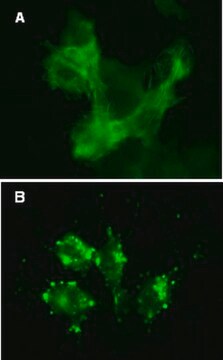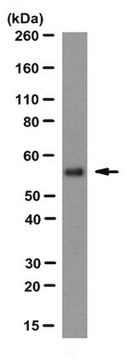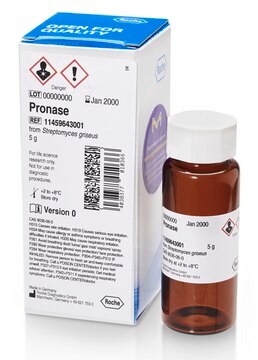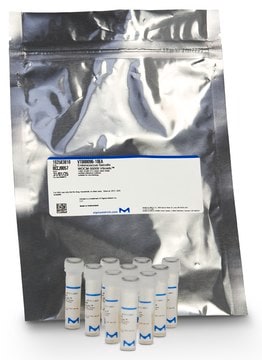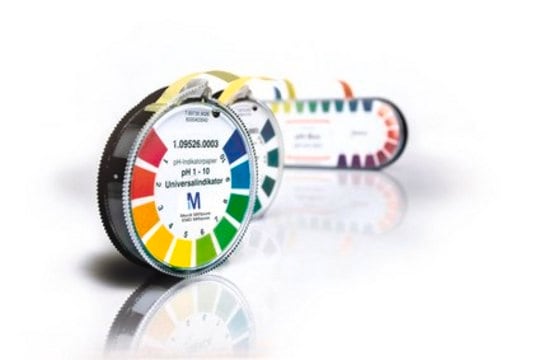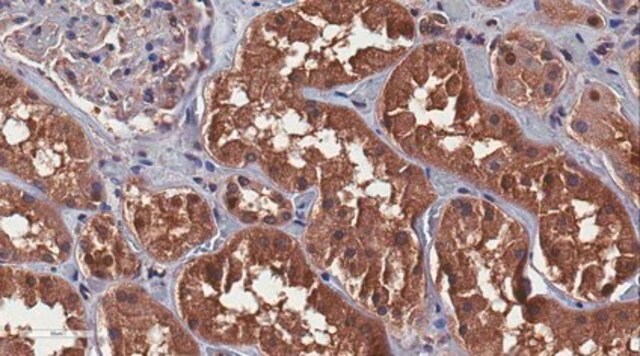06-1002
Anti-LAP2 Antibody
from rabbit, purified by affinity chromatography
Sinónimos:
LEM domain containing 4, TP alpha, TP beta/gamma, TPRP isoform alpha, TPRP isoforms beta/gamma, Thymopoietin isoform alpha, Thymopoietin, isoforms beta/gamma, Thymopoietin-related peptide isoform alpha, Thymopoietin-related peptide isoforms beta/gamma, l
About This Item
Productos recomendados
biological source
rabbit
Quality Level
antibody form
affinity isolated antibody
antibody product type
primary antibodies
clone
polyclonal
purified by
affinity chromatography
species reactivity
rat, human, mouse, canine
technique(s)
immunocytochemistry: suitable
immunofluorescence: suitable
western blot: suitable
NCBI accession no.
UniProt accession no.
shipped in
wet ice
target post-translational modification
unmodified
Gene Information
human ... TMPO(7112)
General description
The best characterized isoforms of lamin binding protein LAP2 are LAP2α and LAP2β. LAP2β is a type II membrane protein in the inner nuclear membrane that binds lamin B and is important to cell viability and controlling nuclear lamina growth. LAP2α has been characterized as a nucleoplasmic protein that interacts with A-type lamins to control gene expression, transcription, and chromatin organization.
Specificity
Immunogen
Application
Representative lot data. This antibody was used to detect the nuclear lamina by immunofluorescence.
Immunocytochemistry:
Representative lot data.
A previous lot was used in confocal fluorescent analysis of A431, HeLa and NIH/3T3 cells using anti-LAP2 rabbit polyclonal antibody (Red).
Actin filaments have been labeled with AlexaFluor 488 -Phalloidin (Green). Nuclear is stained with DAPI (Blue). Positive nuclear staining.
Epigenetics & Nuclear Function
Cytoskeletal Signaling
Quality
Western Blot Analysis:
A 1:1000-1:3000 dilution of this antibody was used to detect LAP2 in HeLa cell lysate.
Target description
Physical form
Storage and Stability
Analysis Note
HeLa cell lysate
Disclaimer
¿No encuentra el producto adecuado?
Pruebe nuestro Herramienta de selección de productos.
Storage Class
12 - Non Combustible Liquids
wgk_germany
WGK 1
flash_point_f
Not applicable
flash_point_c
Not applicable
Certificados de análisis (COA)
Busque Certificados de análisis (COA) introduciendo el número de lote del producto. Los números de lote se encuentran en la etiqueta del producto después de las palabras «Lot» o «Batch»
¿Ya tiene este producto?
Encuentre la documentación para los productos que ha comprado recientemente en la Biblioteca de documentos.
Nuestro equipo de científicos tiene experiencia en todas las áreas de investigación: Ciencias de la vida, Ciencia de los materiales, Síntesis química, Cromatografía, Analítica y muchas otras.
Póngase en contacto con el Servicio técnico